10 Ancient Celtic Holidays to Celebrate in Ireland
The ancient Irish lived a simple agricultural life and based their time around the seasons – spring, summer, fall and winter. For the ancient Celts to mark the passing of the seasons they created Celtic holidays to celebrate the various significant dates on their calendar.
Known as the ‘cross-quarter’ festivals the biggest Celtic holidays were Imbolc, Bealtaine, Lughnasadh and Samhain. The sacred celebrations in Ireland were timed to match seasonal events and were coordinated with the movement of the sun across Irish skies.
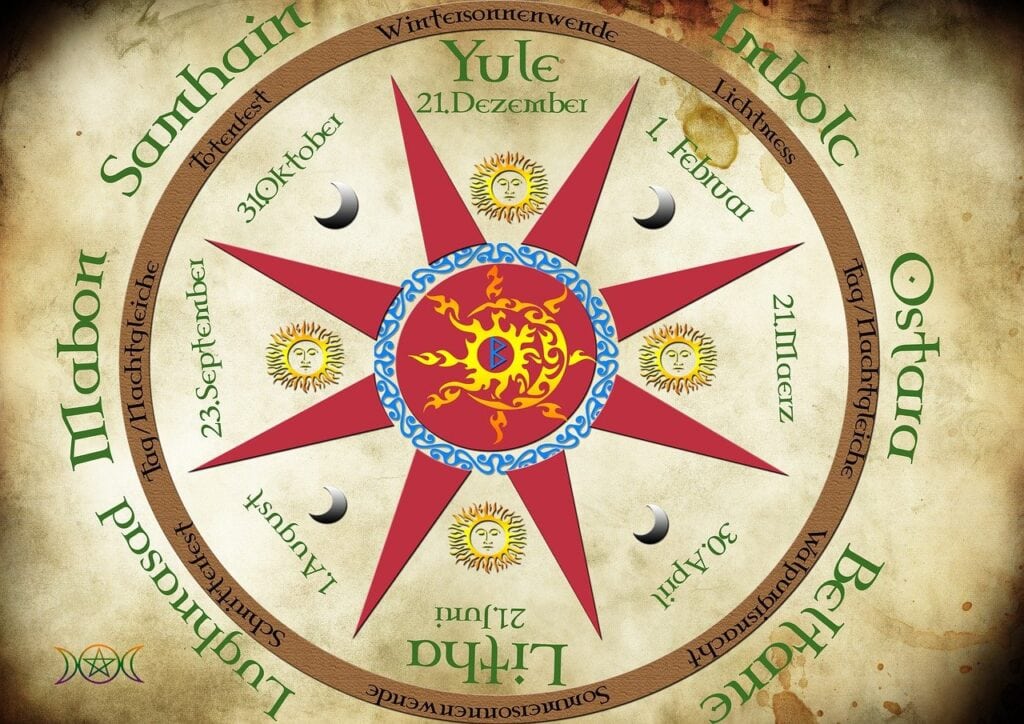
In Ireland, there are eleven important and sacred Celtic holidays of the year celebrated including pagan and Christian. Of these eleven important and sacred Celtic holidays, four are astronomical, four are related to the harvest and farming and three are considered Christian based.
Ireland’s Sacred fire festivals

The Sacred Fire Festivals of Ireland are Imbolc, Beltane, or Bealtaine, Lughnasadh and Samhain. The Celtic year was divided into two halves, the dark and the light. Samhain was the beginning of the dark half, with its counterpart, Beltane beginning the light half. Between these two ‘doors’ or portals fell Imbolc, on February 1, and Lughnasadh or Lammas, celebrated on August 1, quartering the Celtic year. These quarters were again divided by the solstices and equinoxes, which were known as the four Albans.
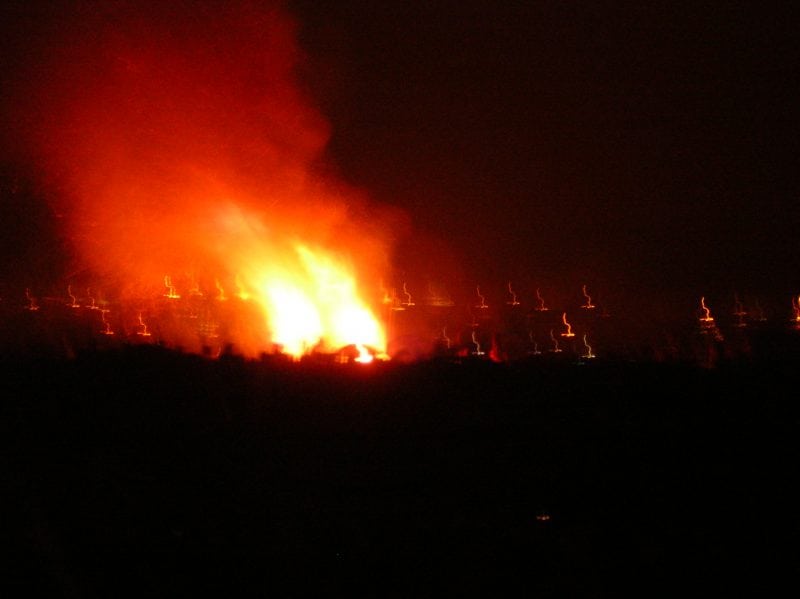
The four fire festivals marked the turning of the seasons. Two of the fire festivals, Samhain and Beltane, were considered to be male, and Imbolc and Lughnasadh were female. Each was celebrated for three days – before, during and after the official day of observance.
- 10 Ancient Celtic Holidays to Celebrate in Ireland
- Ireland’s Sacred fire festivals
- Ancient Celtic Holidays
- Michaelmas – September 29th
- The autumnal equinox – approx Sept. 21st
- Samhain – Oct 31st to Nov 1st
- Winter Solstice/Yule – December 21st
- Imbolc – St. Brigid’s Day – Feb 2nd
- St. Patrick’s Day – March 17th
- Ostara – Easter – March 21st
- Beltaine – May 1st
- Lughnasadh or Lammas – August 1st
- Autumn equinox – Sept. 21st
Ancient Celtic Holidays
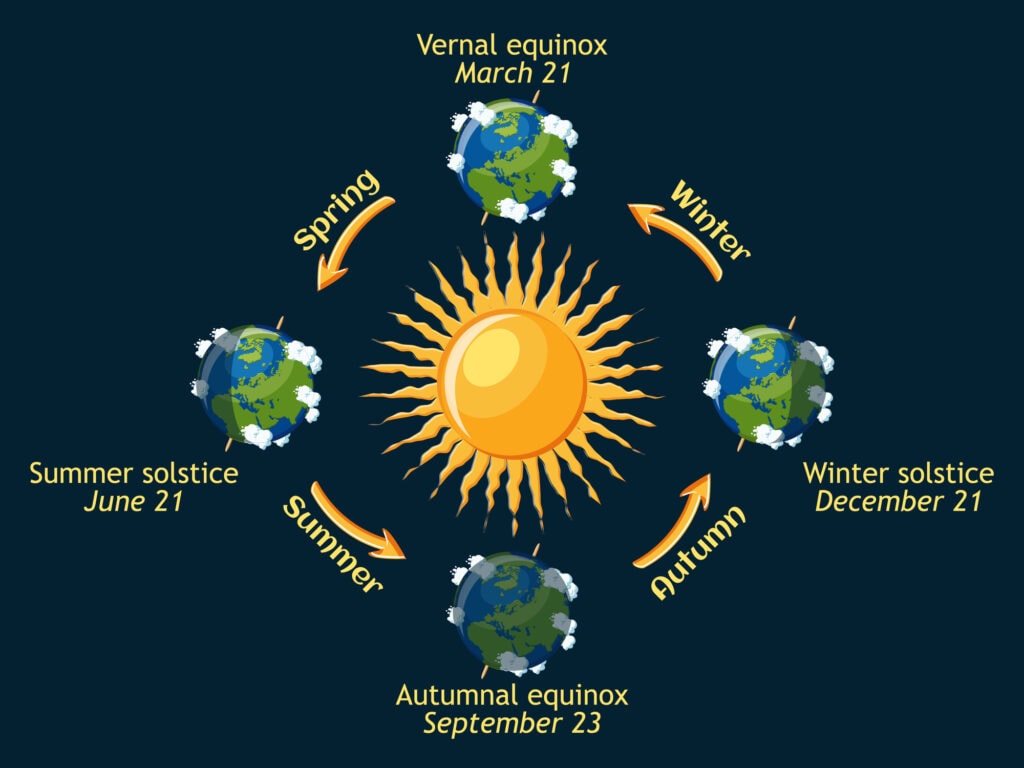
Michaelmas – September 29th
Michaelmas, or the Feast of Michael and All Angels, is celebrated on the 29th of September every year, this is a Christian holiday celebrated by both Catholics and Protestants. As it falls near the equinox, the day is associated with the beginning of autumn and the shortening of days.
During the Middle Ages, Michaelmas was a great religious feast and many popular traditions grew up around the day, which coincided with the harvest in much of western Europe. It was the custom to eat goose on Michaelmas, which was supposed to protect against the financial need for the next year. This is also the last day for picking blackberries which are the filling in Michaelmas pies. The name Michaelmas comes from a shortening of “Michael’s Mass”.

Where is Michaelmas Celebrated in Ireland? In ancient Ireland, it was the Anglo-Normans and the establishment of their customs that gave Michelmas its place on the Irish calendar. In several towns, Michaelmas was the day to elect a mayor, tradition says that the Mayor of Dublin could not be sworn in until after his counterpart in Drogheda. Where this custom came from, no one seems to know. In Waterford, they would hold a procession to the beach and cast an effigy of St. Michael into the sea as a symbolic protest against the loss of earnings.
The autumnal equinox – approx Sept. 21st
Mabon or Alban Elved (Light of the Water) celebrates the day and night before the darkness overtakes the light in other words winter is coming. It is also the last harvest before winter sets in where pagans celebrate and thank earth in her role as Mother and Giver for the good harvest. Alban Elved is the Druidic name for the Autumn Equinox where the night and day are equal and it is a rare magical day due to that balance of light and dark.
Mabon is one of the eight Wiccan sabbats celebrated during the year. In mythology, Mabon is the time when the God of Light was defeated by the God of Darkness, resulting in longer nights. In Celtic folklore, Mabon is the son of Modron, the Great Goddess of the Earth, who was kidnapped for three days after his birth making the light go into hiding.
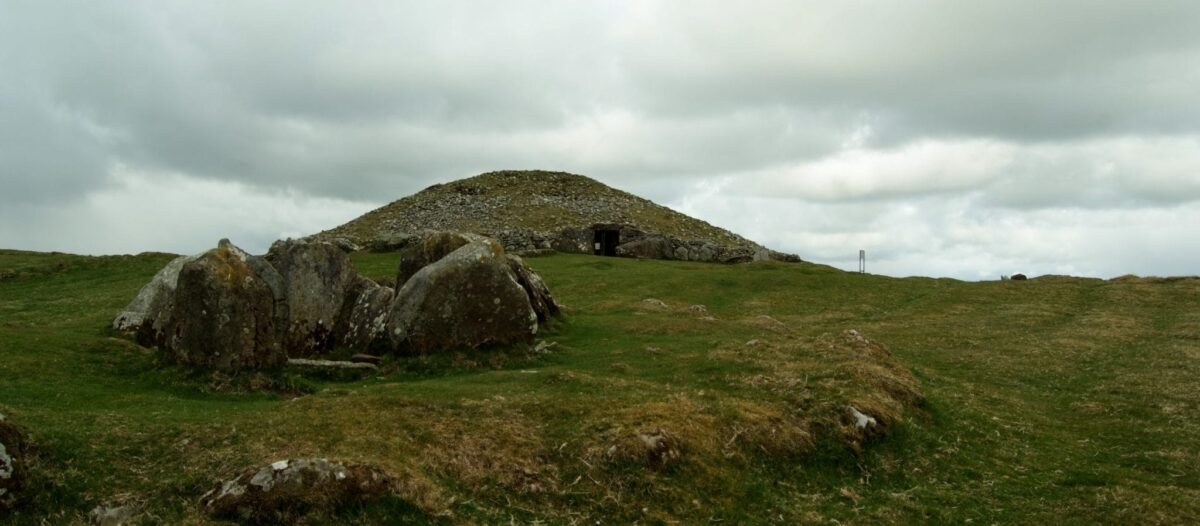
Where is the Autumn Equinox celebrated in Ireland? Loughcrew Cairns, ancient passage tomb cluster near Oldcastle, County Meath.
Samhain – Oct 31st to Nov 1st
For Celtic people, Samhain is celebrated from sunset on October 31st through to when darkness falls on November 1st. This is the mid-point between the Autumn Equinox and Winter Solstice. Samhain is the ancestor of Halloween and is seen as the time when the veil between worlds thins and the spirit can pass through to communicate with the living. In Mexico for example this celebration is called the Day of the Dead (Día de los Muertos) and the celebrations are All Saints’ Day and All Soul’s Day.
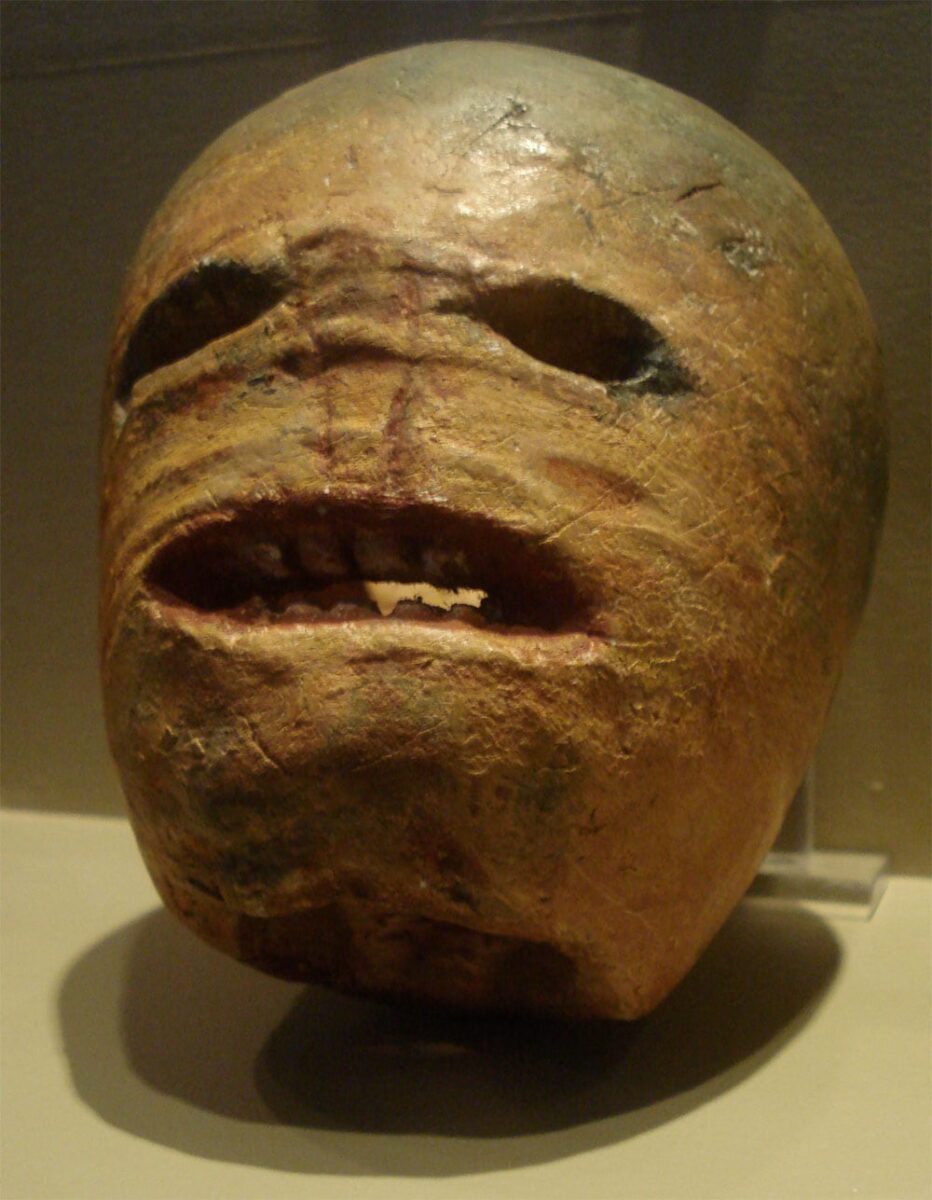
In Gaelic “samhraidhreadh” means “summer’s end”, or the beginning of the dark days (winter). Irish “Samhain” means the month of November and is celebrated as Celtic New Year’s Eve and the final harvest before winter sets in. Much like the Mexican Day of the Dead gifts of food, drink and toys for the children who passed are laid out. Fires are lit from the sacred bonfire and the seanchaí tells ancient tales beside the fires.
Irish folklore as told by the bards and storytellers says that in the three days preceding Samhain, the Sun God Lugh, maimed at Lughnassadh, dies by the hand of his Tánaiste (heir), the Lord of Misrule. Lugh crosses the veil of the world on the first day of Samhain. His heir is miserly and that is why the sun in winter gives no heat and doesn’t protect the land from the north winds and cold.

Where is Samhain Celebrated in Ireland? Samhain is celebrated all over Ireland including Newgrange where the winter solstice takes place deep within the megalithic barrows. In Ireland, two hills in the Boyne Valley are associated with Samhain, Tlachtga, and Tara. Tlachtga was the Great Fire Festival’s location, which began on the eve of Samhain. The entrance passage to the Mound of the Hostages on the Hill of Tara is aligned with the rising sun around Samhain.
Winter Solstice/Yule – December 21st
The winter solstice is the shortest day of the year, but it is also the day when daylight hours begin to return. It is the time of re-birth when the last of the harvest foods is used to celebrate the coming of spring. The Druids called this Alban Arthuran (Light of Arthur, Fire Festival) or Yule meaning Christmas.
Traditions around Yule include gathering mistletoe from oak trees, in an attempt to ward off evil spirits and grant good luck. According to an old Celtic myth, on the solstice the Oak King, representing the light, and the Holly King, representing the dark, would fight, with the Oak King emerging victorious at the winter solstice, enabling the return of the light.

The Yule log tradition comes from the Druids who believed that the sun stood still in the sky during Yule and so they burnt the Yule log to give them light for these days.
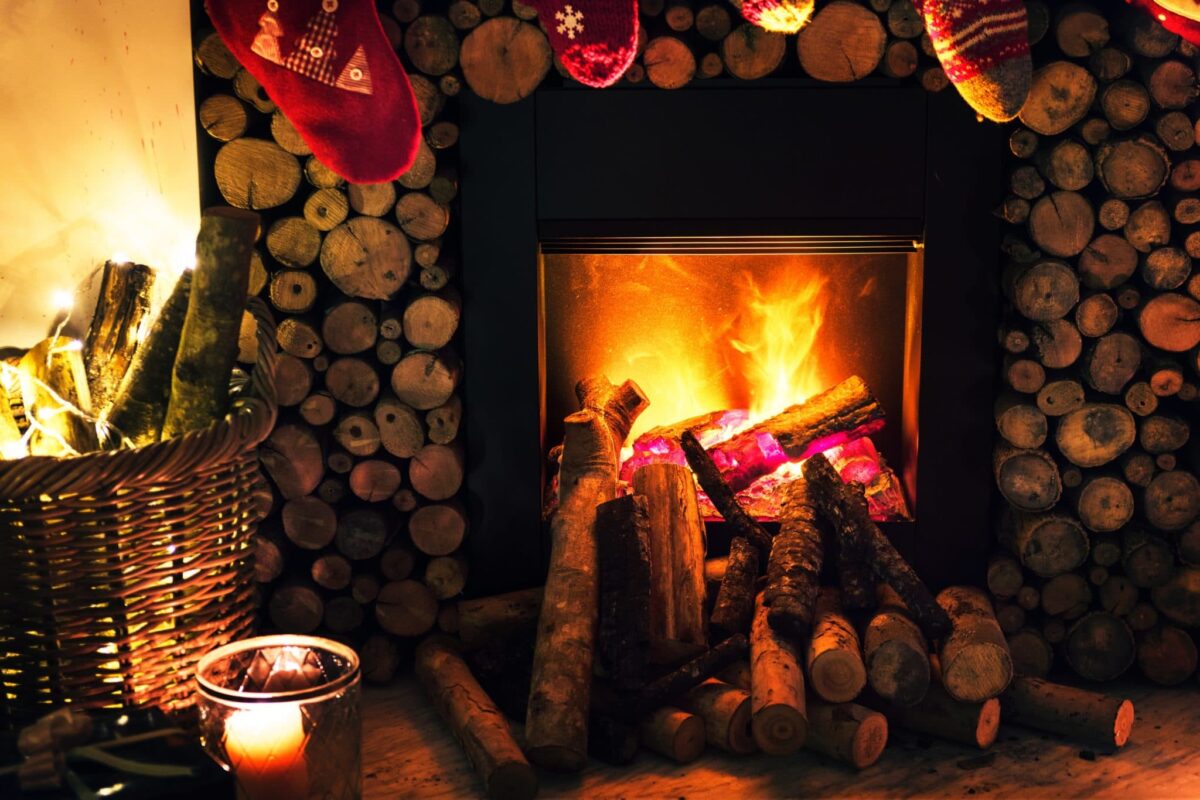
Where is the Winter Solstice celebrated in Ireland? The Newgrange Tomb in County Meath where the sun shines through the gap into the burial chamber at dawn. Other ancient ceremonial sites of the winter solstice celebrations in Ireland include The Hill of Tara and Loughcrew in Meath, Knockroe Passage Tomb in Kilkenny, and Carrowkeel in Sligo.

Imbolc – St. Brigid’s Day – Feb 2nd
Imbolc is a Wiccan and Celtic pagan holiday, that is sometimes referred to as Candlemas or Oimelc. Imbolc symbolizes the halfway point between the winter solstice (Yule) and the spring equinox (Ostara) and is the second Celtic Fire Festival.
Ceremonies involve water, candles pledges and planting a hope or a seed, making candles
Interestingly Imbolc evolved into Groundhog Day in North America as both falls on the same day. To celebrate Imbolc, some modern-day pagans focus on celebrating Brigid. They do this by setting up an altar with the symbols of Brigid, like a corn husk doll, white flowers, a bowl of milk, and candles. If there is a group gathering, they might cast a circle, and recite a prayer to receive a blessing from Brigid
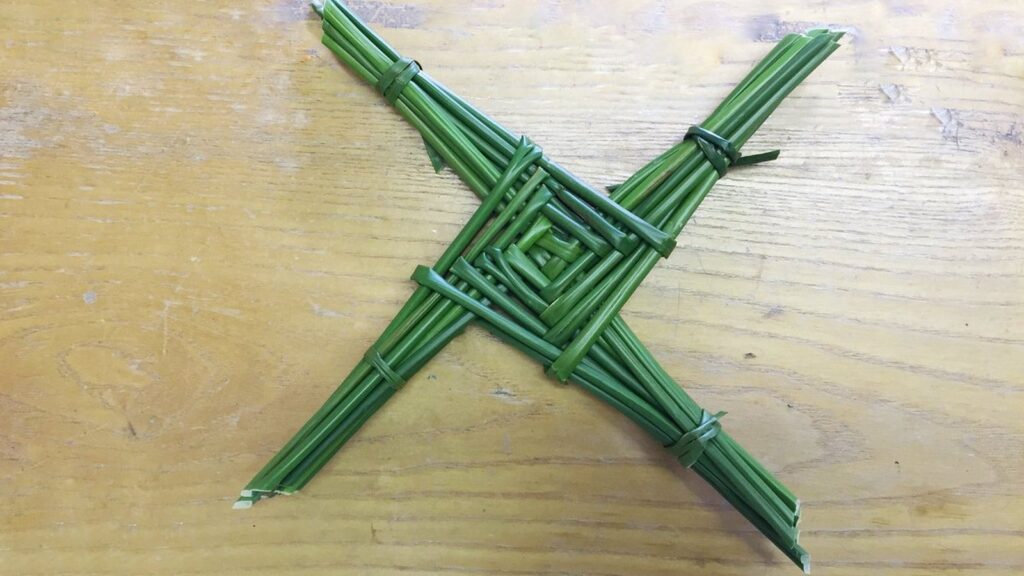
Irish Pagan tradition says that Cailleach a Gaelic goddess gathers firewood on Imbolc for the rest of the winter. If the day is sunny, she gathers a great deal of wood, thusly the winter will continue for some time. If the day is rainy, she will not gather much wood and the remaining winter will be short. Over time this celebration became Christianized and called St. Brigid’s Day.
St Brigid’s Day was the festival of fertility and marked the beginning of spring in Ireland. It signalled an end to the darkness of winter and ushered in a new season of hope and growth.
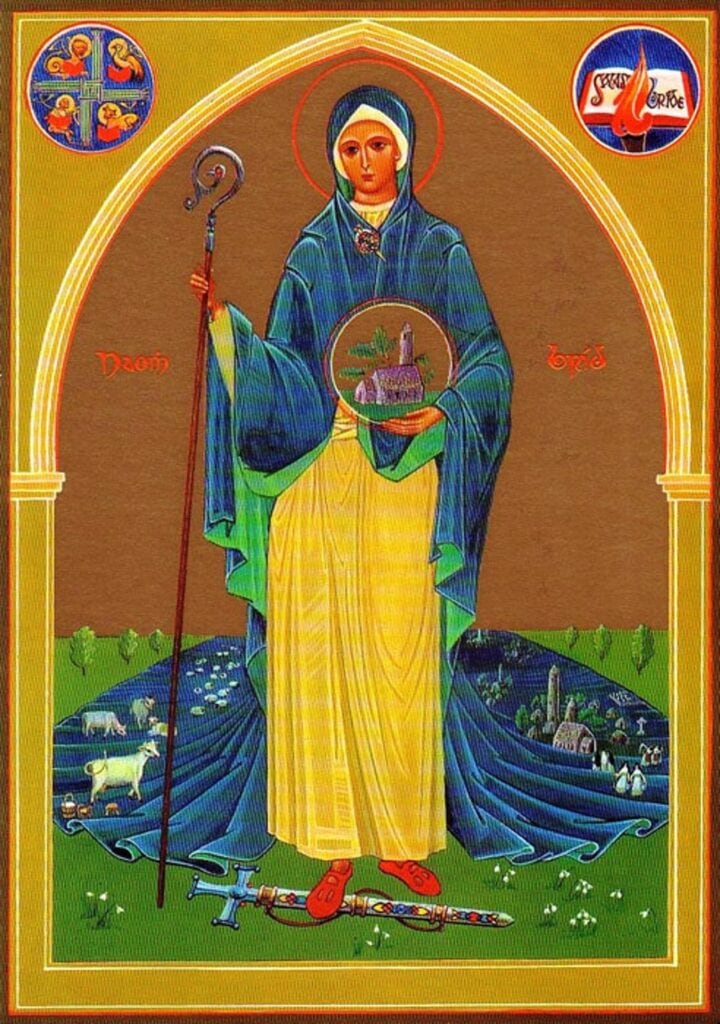
How does Ireland celebrate St. Brigid’s Day? Families would recite prayers, bless the rushes or straw with holy water and then each makes the crosses. They would hang them over the door and around the home to welcome St Brigid. You are also supposed to leave a cloth or scarf outside to be blessed by Saint Brigid as she passes this is called a ‘Bratog Bride’ and after it is blessed it becomes a cure for sore throats.
St. Patrick’s Day – March 17th
St. Patrick is of course the patron saint of Ireland and the date of his death became a holiday and an annual celebration all over Ireland. It was made an official feast day in the 17th century. Not exactly ancient and definitely not pagan but St. Patrick did combine pagan festivals into his version of Christianity to convert them.
Where can you celebrate St. Patrick’s day in Ireland? Well, that’s an easy question pretty much anywhere and everywhere but the best celebrations and parades are held in Dublin.
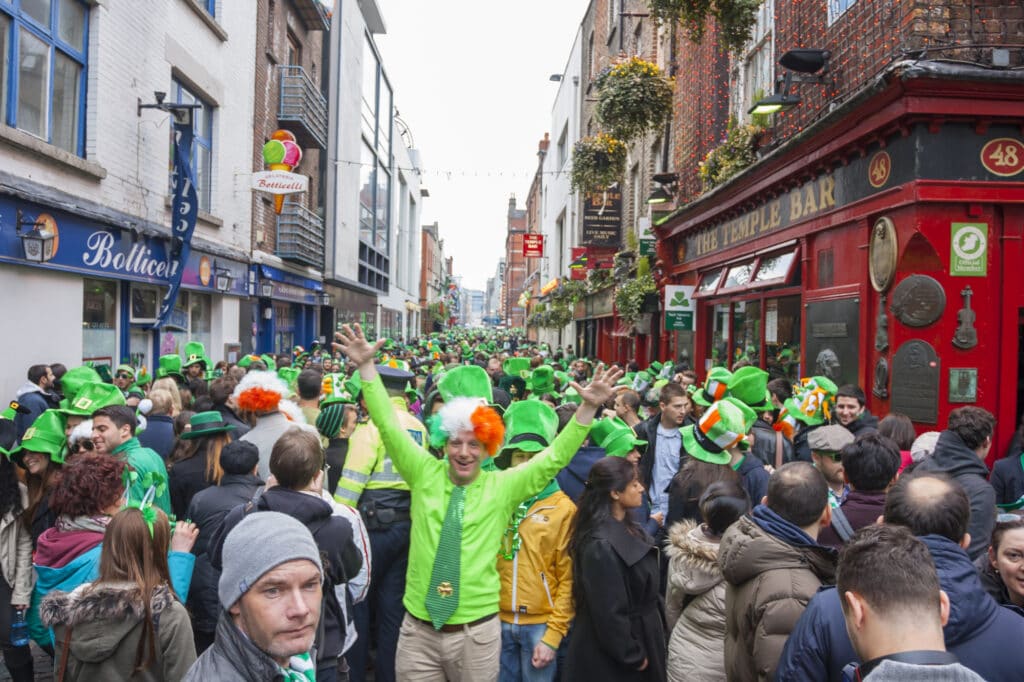
Ostara – Easter – March 21st
Ostar or Alban Eiler (Light of the Earth) in Druid is the Spring Equinox where the day and night are equal. This is the time of planting and eventually evolved into Easter in the Christian calendar.
Ostara was the Celtic goddess of Spring and she was celebrated in festivities and dancing around and through the birch tree between the Spring Equinox and Beltane. Birch twigs were traditionally used to make new brooms to sweep the winter away.

The celebration of Ostara is pretty modern and didn’t show up until the 8th century. Historians believe that this was brought to Ireland by St. Patrick who made a habit of incorporating pagan traditions into his teachings to convert them to Christianity.
The Celtic cross features a circle around the branches the circle represents the sun with the cross in the middle. This was a symbol used by the ancient Christian monks to associate the Irish traditions with Christian ones.
Where is Ostar celebrated in Ireland? Celebrated all over the world including in Ireland as Easter.
Beltaine – May 1st
According to Celtic traditions, Bealtaine is the first day of summer the beginning of the light half of the year. In old Irish Beletene means ‘bright fire’ and in Gaelic, Bealtaine means the month of May.

The Bealtaine tradition meant that the fires within the homes were extinguished and Beltaine was celebrated by lighting hilltop fires it was from these fires that the household fires should be re-lit to celebrate summer coming. The legend of the Beltaine Fires comes from the Dindshenchas (Lore of Places), the fire was lit by a druid named Mide and burned on the Hill for seven years.
The veil between worlds the Shield of Skathach on this day is thin, allowing the fae or fairies to cross over into our world.
Where is Beltane celebrated in Ireland? At the Beltany Stone Circle in Donegal, you can watch the sunrise which is aligned with the only decorated stone in the circle. The Beltany Stone Circle gets its name from Beltane which is associated with the lighting of hilltop fires in a rekindling of the sun.
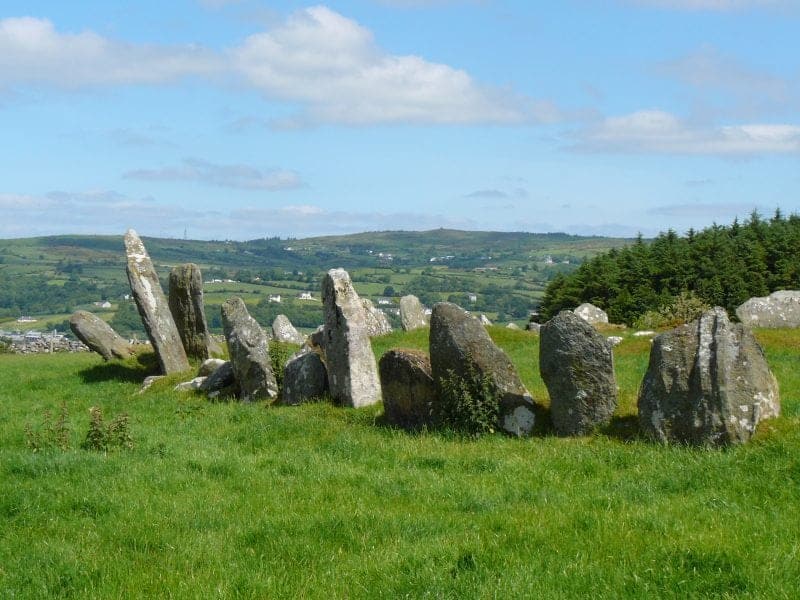
A huge Beltaine celebration takes place at the Hill of Uisneach where thousands of people come together to see the great fire lit.
Litha – Summer Solstice – June 21st
Alban Heruin in Druid means ‘Light of the Shore’ and takes place on midsummer’s eve and celebrates the light of the sun which gives life. This is the longest day of the year.
Litha is a pagan holiday; one of eight Wiccan sabbats held during the year. The traditions of the summer solstice appear to be borrowed from many cultures across the Celtic world and most ancient cultures celebrated the summer solstice in some way. The Irish Celts dedicated this day to their Celtic goddess Etain.
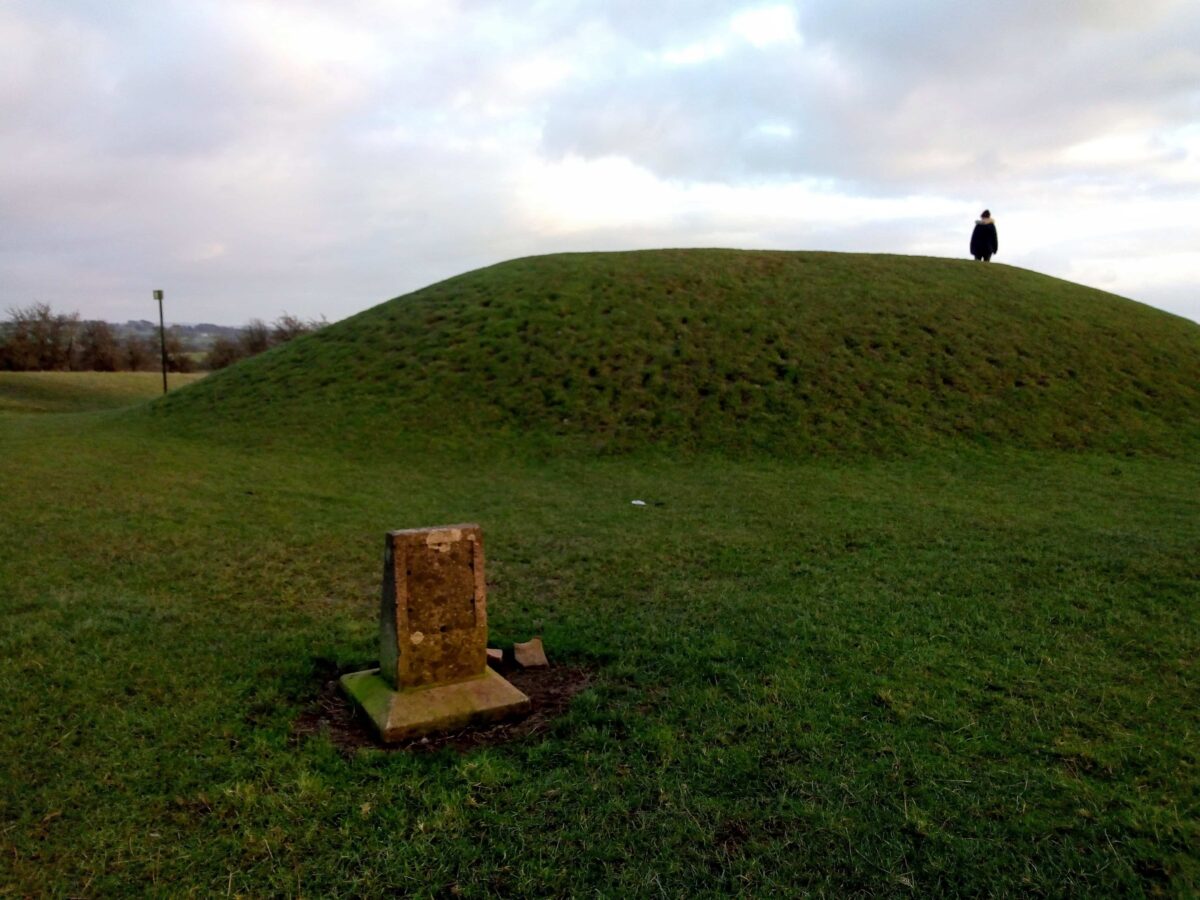
Where is Litha or Summer Solstice celebrated in Ireland? Irish summer solstice rituals see crowds gather on the Hill of Tara to celebrate the longest day of the year. In Tipperary, they celebrate LITHA over 4 days of music and spoken word poetry across Tipperary.
Lughnasadh or Lammas – August 1st
Lughnasadh is the 4th Gaelic Fire Festival and means ‘Lugh’s assembly’ which is said to be when Lugh celebrated a funeral feast for his foster-mother Tailtiu. In modern Gaelic Lughnasah means August. This is the first harvest festival that celebrates the harvest season and moves from summer to winter.
This is a joyous celebration where the ancient Irish would build great bonfires on the hilltops and dance the night away celebrating the Celtic God Lugh.

Where to celebrate Lughnasadh in Ireland? Lughnasadh is still celebrated in Ireland today at the Auld Lammas Fair in county Antrim where people will wander through the markets eating the traditional sweet treat Yellow Man.
The most popular is the Puck Fair in Killorglin county Kerry which dates back to the 16th Century and has its roots in Lughnasadh.
The mountain pilgrimage Croagh Patrick in County Mayo takes place each year at this time. The pilgrimage attracts tens of thousands of pilgrims who hike the mountain in their bare feet.

Autumn equinox – Sept. 21st
The Autumn equinox is During the autumnal equinox, the sun shines directly on the equator, and the northern and southern hemispheres get the same amount of rays. A sacred day for the ancient Irish as it is the day that the fall harvest is collected and saved for the bitter winter months.
Mea’n Fo’mhair is the Gaelic for September – roughly translated it means Middle – Harvest. Close to mid-way through September, the autumn equinox marks the halfway point between the longest and shortest days of the year – a time of balanced equal day and night.
Where is the Autumnal Equinox celebrated in Ireland? At Lough Crew, the crowds gather at the Hill of the Crone or Cairn T to celebrate the rising sun which illuminates the stones within the cairn.
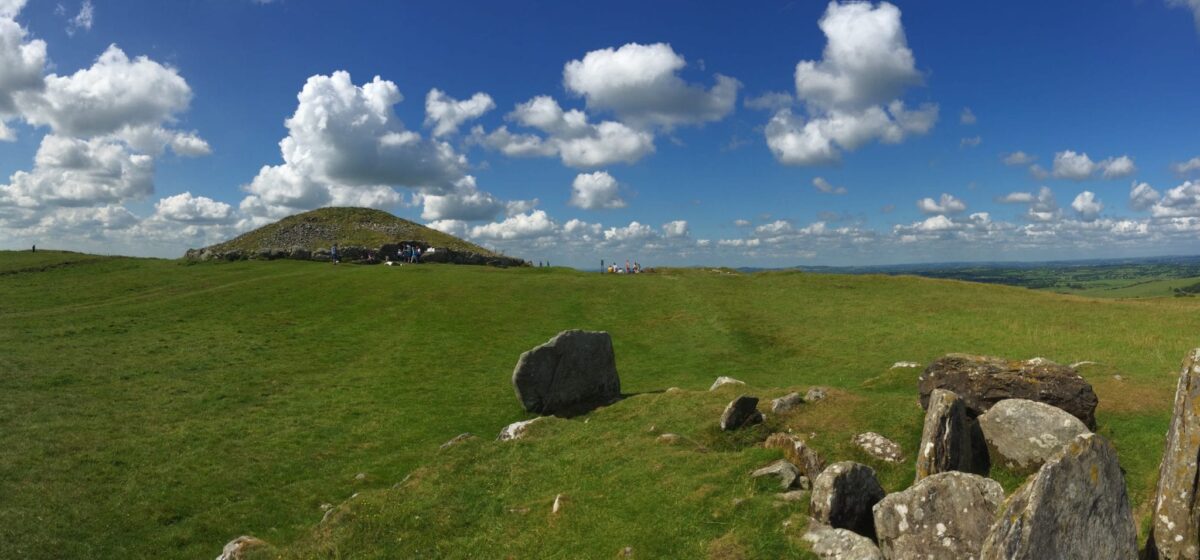
The religion of pagan Ireland was believed to have been Druidic in origin. The druids were the learned ones those who were scholars, doctors, lawgivers, healers and magicians. The seat of druidism was, according to St. Patrick, the Hill of Tara. Druid holidays coincided with the seasons and the way the sun moved across the sky. They used the natural time to determine the seasons and equinoxes and to create celebrations around these major events.
What we call the pagan festivals of Ireland have their roots in the ancient beliefs in fairies, the supernatural and the changing seasons and ancient Celtic holidays revolve around these conditions.
If you get the chance to experience a Celtic holiday festival in Ireland it will be an experience you will never forget and an opportunity to learn about these incredibly rich Irish traditions.
You might also like
Medieval Ireland – the Crusaders in Limerick
Irish Witches – famous Celtic witches
Ireland’s Ancient East – an epic road trip
Pin it for later
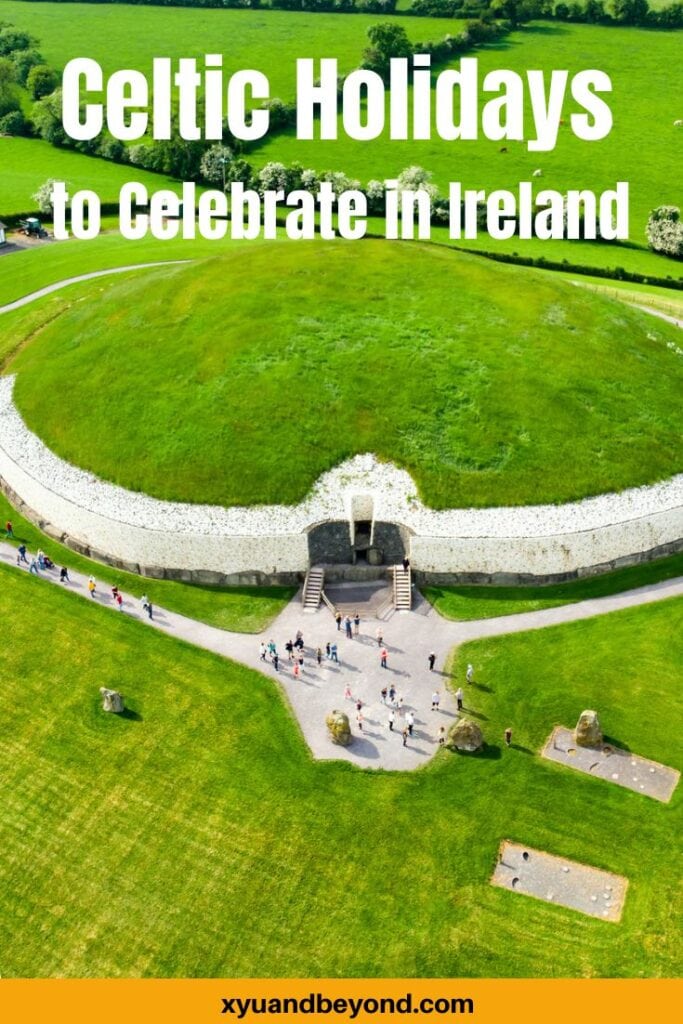
.
